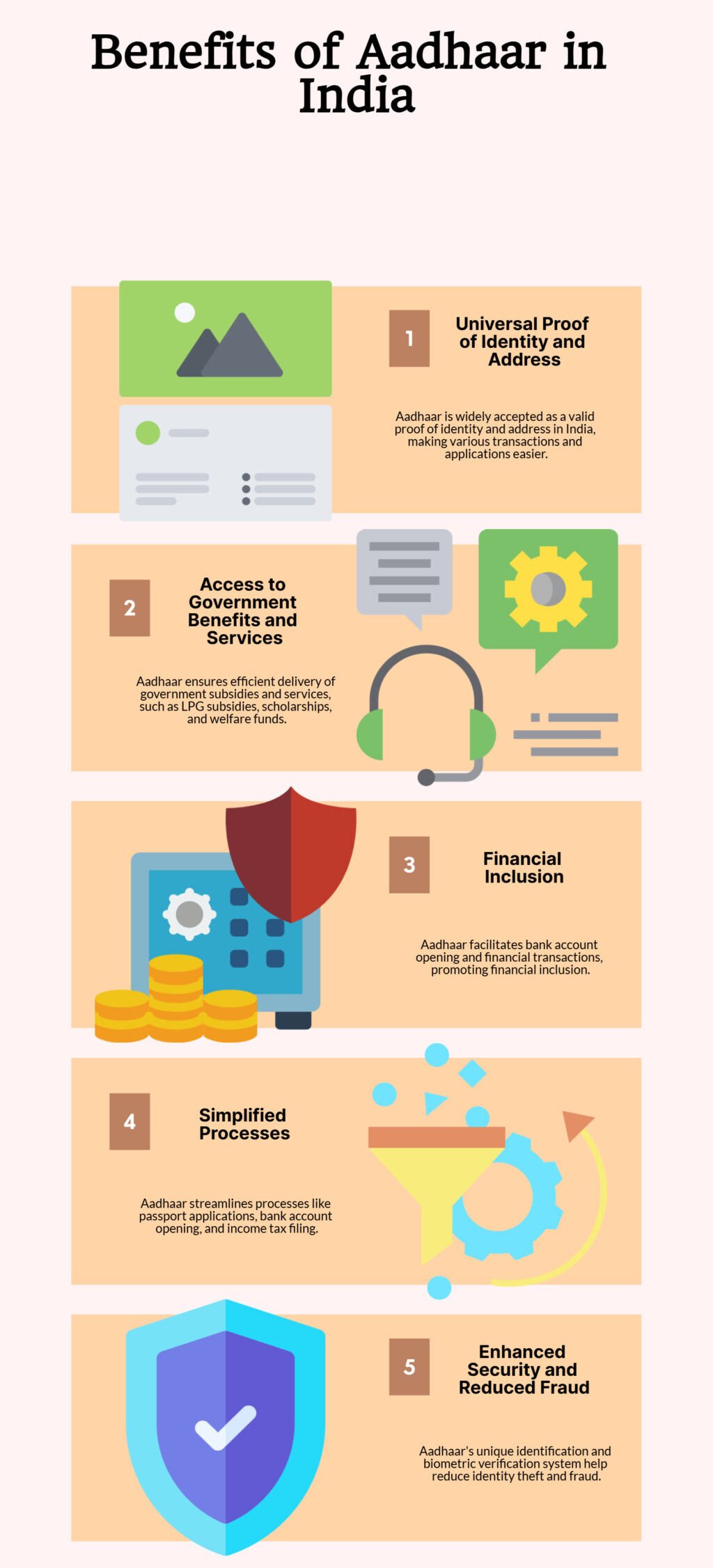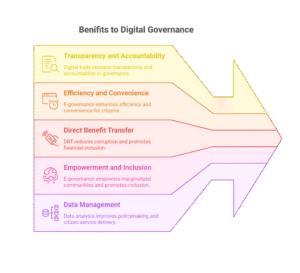e-Governance: How Technology is Reshaping Our Public Services and Empowering Citizens
- Related toGovernance, Polity
- Published on28 May 2025
 Ever found yourself stuck in a seemingly endless queue, shuffling papers, just to get a simple government service done? Or perhaps you’ve reminisced about the days when booking a train ticket meant a trip to the station, often hours in advance? If these scenarios strike a chord, you’ve already intuitively grasped why the shift towards digital governance isn’t just a fancy upgrade, but a fundamental transformation. Imagine a world where public services are at your fingertips, transparently delivered, and your interactions with government bodies are seamless and efficient. This isn’t a far-off dream; it’s the unfolding reality of e-governance, a quiet revolution that’s reshaping how governments operate and, more importantly, how we, as citizens, experience an active, participatory democracy. It’s about making governance less of an ordeal and more of an enabler in our daily lives.
Ever found yourself stuck in a seemingly endless queue, shuffling papers, just to get a simple government service done? Or perhaps you’ve reminisced about the days when booking a train ticket meant a trip to the station, often hours in advance? If these scenarios strike a chord, you’ve already intuitively grasped why the shift towards digital governance isn’t just a fancy upgrade, but a fundamental transformation. Imagine a world where public services are at your fingertips, transparently delivered, and your interactions with government bodies are seamless and efficient. This isn’t a far-off dream; it’s the unfolding reality of e-governance, a quiet revolution that’s reshaping how governments operate and, more importantly, how we, as citizens, experience an active, participatory democracy. It’s about making governance less of an ordeal and more of an enabler in our daily lives.
What Exactly is This E-Governance We Speak Of?
At its heart, e-governance, or electronic governance, is about governments leveraging the power of digital technologies – think the internet, mobile apps, and other Information and Communication Technology (ICT) tools – to deliver services, share information, conduct transactions, and even encourage us to participate more actively in the democratic process. The big idea? To make government workings more transparent, hold systems more accountable, and ensure that services are responsive to our needs.
Think of it as the government deciding to upgrade its entire operating system. The ultimate aim is to close the distance between the state and its people by fostering an administrative system that is not only effective but also genuinely participatory and inclusive. This isn’t just about putting forms online; it’s about creating single-window access for various services, simplifying how different government departments talk to each other (and to us!), ensuring information flows freely and in real-time, and providing platforms where our feedback and grievances are heard and addressed. These elements work together to build a governance ecosystem that’s smooth, efficient, and user-friendly. A tangible example is the significant shift in how official files are managed within central government offices in India; by early 2024, an impressive 95% of these files were being handled digitally, a testament to initiatives that began streamlining these processes years prior.
The Blueprint: Core Principles Guiding E-Governance
The success of e-governance isn’t accidental; it’s built on a philosophy often summarized by the acronym SMART – that is, governance which is Simple, Moral, Accountable, Responsive, and Transparent. To bring this philosophy to life, e-governance relies on four critical pillars:
- People: We, the citizens, are at the centre of it all – both as the beneficiaries and the driving force. Our digital literacy, our willingness to adapt to new digital platforms, and our active engagement directly influence how far-reaching and impactful e-governance can be. It’s a two-way street!
- Process: This involves a deep dive into existing government procedures, often leading to a complete re-engineering and redesign. The goal is to strip away complexity, enhance transparency, and rebuild processes with the citizen’s convenience in mind.
- Technology: This is the engine room. Technology provides the essential infrastructure, the software, the networks, and all the tools necessary for this digital transformation of administrative functions. From secure databases to user-friendly mobile apps, technology makes it all possible.
- Resources: This encompasses not just the financial investment needed to build and maintain these digital systems, but also the human capital – the skilled professionals, the data scientists, the policy analysts – whose expertise is crucial for implementing and sustaining e-governance projects effectively.
It’s important to note that e-governance is more than just a digital post office for services. It has fundamentally changed how the government communicates and interacts, opening up several key channels:
- Government-to-Citizen (G2C): This is perhaps the most visible aspect. It’s all about direct interaction with us, the public. Think about paying your utility bills online, applying for passports or driver’s licenses from your home, or receiving welfare benefits directly into your bank account.
- Government-to-Business (G2B): This channel focuses on streamlining the government’s relationship with the business world. It simplifies processes like obtaining licenses, permits, environmental clearances, and even participating in government tenders, fostering a more business-friendly environment.
- Government-to-Government (G2G): This is about the seamless flow of information and data between different government departments, agencies, and even different levels of government (central, state, local). Imagine the improved efficiency when, for example, a road construction project requiring approvals from transport, environment, and finance ministries can have its paperwork move digitally and simultaneously, rather than sequentially from one dusty file to another.
- Government-to-Employee (G2E): This pathway uses technology to manage services and communications for those working within the government. This includes everything from salary disbursement and HR functions like transfers and promotions, to online training modules and internal communication platforms. A well-managed internal system often translates to better external service.
So, these digital avenues haven’t just appeared overnight; they are the result of a dedicated, decades-long journey.
The Digital Dawn: Tracing India’s E-Governance Evolution
While the term “e-governance” gained currency more recently, India’s tryst with using technology in administration began quietly in the 1970s with the initial computerization of government offices. A significant early step was the establishment of the National Informatics Centre (NIC) in 1976, which laid the groundwork for integrating ICT into public administration. The 1980s and 1990s saw a steady, if slow, march towards automating government processes and connecting administrative offices through networks.
The real game-changer arrived in 2006 with the launch of the National e-Governance Plan (NeGP). This ambitious plan aimed to make government services accessible to the common person through a series of Mission Mode Projects (MMPs) – 27 of them, in fact – cutting across a wide spectrum of government functions. A standout success under NeGP was the creation of Common Service Centres (CSCs), which are essentially internet-enabled kiosks in rural and remote areas, helping bridge the digital divide and bringing services closer to people’s doorsteps.
Building on this foundation, 2015 saw the launch of e-Kranti (also known as NeGP 2.0). This initiative provided a fresh framework for accelerating digitization, with a strong emphasis on “Mobile First” (designing services for mobile phone accessibility), “Cloud First” (leveraging cloud computing for scalability and efficiency), and the overarching Digital India Mission.
The Digital India Mission, in particular, has been a powerhouse, fueling the creation of critical digital infrastructure for governance and citizen empowerment. Several flagship initiatives under this umbrella have profoundly shaped India’s e-governance landscape:
- Aadhaar: The world’s largest biometric identification system, Aadhaar has become a cornerstone for delivering welfare services directly and reducing leakages, ensuring that benefits reach the intended recipients.
- UMANG (Unified Mobile Application for New-age Governance): This platform acts like a super-app, offering a single point of access to a multitude of government services from central, state, and local bodies, right on your smartphone.
- UPI (Unified Payments Interface): While not solely a government service, its integration into G2C transactions has revolutionized digital payments, making everything from paying for public transport to receiving subsidies incredibly straightforward. Its widespread adoption is a global success story.
- BharatNet: An ambitious project aiming to connect all Gram Panchayats (village councils) with high-speed broadband. By early 2024, over 200,000 Gram Panchayats had been connected with optical fiber, laying the digital highway to rural India.
- Government e-Marketplace (GeM): This online platform has brought unprecedented transparency and efficiency to public procurement, allowing government departments to buy goods and services directly from sellers in an open market.
- E-Courts Mission Mode Project: Aimed at digitizing the judiciary, this initiative has introduced e-filing of cases, virtual hearings, and online access to case information, contributing to faster and more transparent justice delivery.
- E-Office: Designed to create a paperless office environment in government, it has streamlined file management, improved tracking, and sped up decision-making processes.
Many state governments have also been proactive, launching their own innovative e-governance initiatives tailored to local needs. Collectively, these efforts have showcased the immense transformative power of going digital, though the journey hasn’t been without its bumps.
The Upside: Real Benefits We’re Seeing
The shift to e-governance isn’t just about technological wizardry; it’s about tangible improvements in our lives and in how the country is run.
- Greater Transparency and Accountability: Digital trails are harder to erase than paper ones. Online systems reduce the scope for arbitrary actions by officials, making government functioning more open. When you can track your application online, or when procurement happens through an open e-marketplace, transparency naturally increases, and with it, accountability.
- Enhanced Efficiency and Convenience: Remember those queues we talked about? E-governance allows citizens to access crucial services like licenses, certificates, and subsidies without multiple physical visits to government offices. This saves an incredible amount of time, money, and effort for everyone. Applying for a passport online and scheduling an appointment is a world away from the older, entirely manual process.
- Direct Benefit Transfer (DBT): This has been a game-changer. By leveraging Aadhaar and digital payment systems, the government can transfer subsidies and other welfare payments directly into the bank accounts of intended beneficiaries. This has dramatically cut down on “leakages” (corruption and diversions) and has been a massive step towards financial inclusion.
- Empowerment and Inclusion: E-governance has opened up new avenues for marginalized sections of society – including women, remote rural populations, and historically oppressed communities – to access information, benefit from government programs, and have their voices heard. Digital platforms can bypass traditional gatekeepers and social barriers.
- Improved Data Management and Decision Making: Large-scale digitization generates vast amounts of data. When analyzed effectively (and ethically), this data can provide deep insights for evidence-based policymaking and help governments better predict and respond to citizen needs.
Navigating the Bumps: Challenges on the Digital Highway
While the benefits are compelling, the path to fully realised e-governance is paved with challenges that need careful navigation:
- The Digital Divide: This is a multifaceted issue. It’s not just about owning a smartphone or having an internet connection; it’s also about the quality and affordability of that connection, and possessing the necessary digital literacy to use these services effectively. Many in rural and economically weaker sections still find themselves on the wrong side of this divide.
- Cybersecurity and Data Privacy: As more citizen data moves online, ensuring its security and protecting individual privacy becomes paramount. The threat of cyberattacks, data breaches, and misuse of personal information is very real and requires robust technological and legal safeguards.
- Digital Literacy and Skill Gaps: Simply providing access to technology isn’t enough. There’s a significant need for training and capacity building, not only for citizens to confidently use digital services but also for government employees to effectively manage and operate these new systems.
- Infrastructure Deficiencies: While initiatives like BharatNet are making strides, consistent high-speed internet access and reliable electricity supply, especially in remote and rural areas, remain significant hurdles.
- Resistance to Change: Old habits die hard. There can be resistance to adopting new digital processes, both from within government departments accustomed to traditional ways of working and sometimes from citizens who may be hesitant or find new systems complex.
- Interoperability Issues: Different government departments often develop their systems in silos. Ensuring these disparate systems can “talk” to each other seamlessly is crucial for a truly integrated e-governance experience, but it’s a complex technical and administrative challenge.
- Ensuring Inclusivity in Design: Services must be designed keeping in mind diverse user needs, including those with disabilities, the elderly, and those with limited literacy. Multilingual interfaces and intuitive design are critical.
Charting the Course Forward: Strengthening E-Governance for Tomorrow
To harness the full potential of e-governance and overcome the existing challenges, a multi-faceted and proactive approach is essential.
Bridging the Digital Chasm: This requires sustained efforts in expanding last-mile connectivity, ensuring affordable internet access, and making digital devices more accessible, perhaps through community access points or targeted subsidies.
Championing Digital Literacy: Targeted and continuous training programs are needed for both citizens and government officials. Initiatives like BHASHINI, which aims to provide services in multiple Indian languages using AI and Natural Language Processing, are vital for overcoming linguistic barriers and making digital services truly accessible to all.
Fortifying Cybersecurity and Privacy Frameworks: This involves investing in cutting-edge security technologies, establishing robust legal frameworks for data protection, and fostering a culture of cybersecurity awareness.
Designing for All (Inclusive Design): User experience (UX) and user interface (UI) design must prioritize simplicity, accessibility for people with disabilities, and multilingual support from the outset.
Fostering a Culture of Feedback and Participation: Creating effective and responsive channels for citizen feedback can help democratize the governance process further, making services more attuned to actual needs and fostering a sense of co-creation.
Continuous Capacity Building and Policy Agility: The technological landscape is ever-evolving. Government agencies need to invest in ongoing training for their staff and ensure that policies and regulations can adapt quickly to new technological advancements like Artificial Intelligence (AI), Blockchain, and the Internet of Things (IoT), which hold immense potential for future e-governance applications.
The Digital Thread in Our National Fabric
India’s journey with e-governance is more than just a technological upgrade; it’s a clear statement of intent towards building a governance system that is fundamentally transparent, consistently accountable, and genuinely citizen-centric. As the nation continues its march towards a future brimming with potential, e-governance will undoubtedly remain a crucial pillar, not just supporting but actively shaping a more efficient, equitable, and empowered society. It’s about weaving a digital thread so deeply into the fabric of our public life that good governance becomes an intuitive, accessible experience for every single citizen.
Definition: E-Governance means using digital technology (like mobile apps, websites, and databases) to deliver government services efficiently and transparently.
Core Philosophy: Built on the SMART principle – Simple, Moral, Accountable, Responsive, Transparent.
Key Pillars: People, Process, Technology, and Resources are the backbone of successful e-governance.
Main Channels:
G2C (Government to Citizen) – e.g., online bill payments, passport applications
G2B (Government to Business) – e.g., tenders, licensing
G2G (Government to Government) – e.g., inter-departmental data sharing
G2E (Government to Employee) – e.g., e-office, HR services
Major Initiatives:
Aadhaar – World’s largest biometric ID program
UMANG – Unified access to 100+ government services via mobile
UPI – Digital payment revolution
BharatNet – Rural broadband connectivity
GeM – Transparent public procurement
E-Courts & E-Office – Judiciary and administration digitalisation
Benefits Realized:
Reduced corruption through transparency
Faster and more convenient service delivery
Direct Benefit Transfers (DBT) into bank accounts
Greater citizen participation and empowerment
Efficient, data-driven policymaking
Challenges:
Digital divide and inconsistent infrastructure
Cybersecurity and data privacy concerns
Low digital literacy among rural and elderly populations
Resistance to change within administrative departments
Lack of system interoperability across government levels
Loved this article? Go to Learning EDGE+ Page↗️

